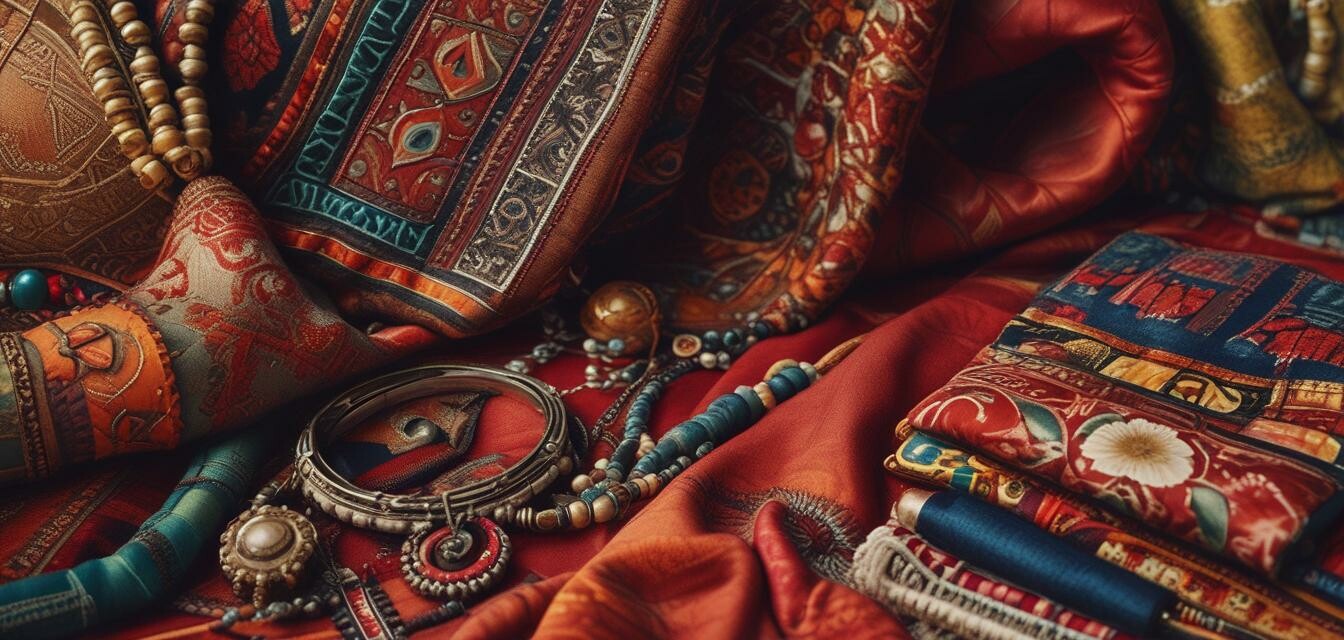
For FTC Disclosure see Footer
Incorporating Historical Influences in Fusion Wear
Fashion is an ever-evolving canvas, reflecting the complexities of culture over time. In today's world of cultural fusion fashion, past fashion trends from various cultures play a significant role in shaping modern styles. This article dives into how these historical influences contribute to contemporary fusion wear, creating a rich tapestry of style and significance.
Key Takeaways
- Historical influences enrich modern cultural fusion fashion by blending unique styles and patterns.
- Different cultural eras contribute to the versatility and diversity of fusion wear.
- Understanding the roots of fashion trends can inspire personalized style choices.
- Popular historical influences range from bohemian chic to vintage fusion.
- Incorporating accessories and silhouettes from different cultures adds a unique flair to daily outfits.
Understanding Cultural Fusion Fashion
Cultural fusion fashion is a celebration of global aesthetics, where distinct characteristics from various cultures come together to form innovative styles. This notion of mixing traditions allows for creativity and the expression of individuality. By understanding how historical influences shape these trends, we can better appreciate the artistry involved.
Historical Inspirations in Fashion
The concept of cultural fusion isn't new; it has been part of the fashion world for centuries. Here are some notable historical influences:
| Era | Cultural Elements | Fusion Styles |
|---|---|---|
| Victorian Era | Rich fabrics, elaborate patterns | Modern kimonos with Victorian laces |
| Bohemian Movement | Eclectic prints, flowy silhouettes | Bohemian chic outfits |
| 70s Hippie Culture | Bright colors, bold statement pieces | Sustainable artisan designs |
| Global Ethnic Patterns | Traditional prints from various cultures | Ethnic prints paired with contemporary pieces |
Popular Styles Espousing Historical Influences
Several clothing categories within cultural fusion fashion stand out due to their historical significance that inspires modern trends. Here are examples of how history influences fashion today:
- Bohemian Chic: Drawing inspiration from the 19th-century bohemian lifestyle.
- Ethnic Prints: Celebrating patterns from various traditions, successfully merging with modern styles.
- Vintage Fusion: Combining retro elements with contemporary silhouettes.
- Modern Kimonos: A beautiful mix of traditional Japanese styles with a global twist.
- Sustainable Artisan: Incorporating eco-friendly methods and cultural craftsmanship into everyday fashion.
Blending Accessories for a Complete Look
Accessories play a crucial role in accentuating fusion wear; mixing elements from varied cultures can elevate a simple outfit. A well-chosen accessory can transition your look from ordinary to extraordinary. Here are some tips:
| Accessory | Cultural Influence | Styling Tips |
|---|---|---|
| Jewelry | Ethnic and handcrafted items | Mix and match layers for an eclectic look. |
| Scarves | Traditional prints | Use them as headwraps or belts to add variety. |
| Bags | Artisan-crafted designs | Select a bag that complements ethnic prints in your outfit. |
| Shoes | Cultural patterns | Opt for styles that balance comfort with standout prints. |
How to Incorporate Historical Trends into Your Wardrobe
The beauty of cultural fusion fashion lies in its ability to encourage everyone to be expressive. Here are a few actionable tips on incorporating historical elements into your wardrobe:
Beginner's Tips
- Start with one statement piece that has historical significance.
- Combine vintage items with contemporary wear for a unique contrast.
- Experiment with accessories that showcase cultural craftsmanship.
- Don’t be afraid to mix prints from different cultures!
- Visit local markets for unique artisan pieces that tell a story.
The Fabric of Fashion: Color and Patterns
Colors and patterns are integral to the aesthetics of fusion wear. Understanding the psychology and meaning of different colors from various cultures can also play a role in your choices. Here are some significant hues and their cultural representations:
| Color | Cultural Significance | Patterns |
|---|---|---|
| Red | Strength and passion (e.g., Chinese culture) | Intricate floral and geometric patterns |
| Indigo | Peace and tranquility (e.g., Indian culture) | Tie-dye and block prints |
| Green | Growth and harmony (e.g., many cultures) | Natural motifs, leaves, and nature-inspired designs |
| Gold | Wealth and wisdom (e.g., Middle Eastern culture) | Elaborate and ornate patterns |
Pros
- Encourages creativity and self-expression.
- Enhances wardrobe versatility with unique combinations.
- Supports artisan craftsmanship and sustainable practices.
- Enriches understanding of cultural diversity.
Cons
- Potential misrepresentation of cultural significance.
- Can become overwhelming when mixing too many styles.
- May require careful selection to maintain harmony in looks.
Conclusion
Incorporating historical influences in fusion wear allows for a meaningful exploration of both past and present styles. By embracing the rich tapestry of fashion history, individuals can express their unique personality while celebrating cultural diversity. Whether through vibrant colors, intricate patterns, or artisan-crafted accessories, the essence of cultural fusion fashion is to inspire and create appreciation for our global heritage.
To further explore styles that embody cultural fusion, check out our Bohemian Chic, Ethnic Prints, and Global Accessories.